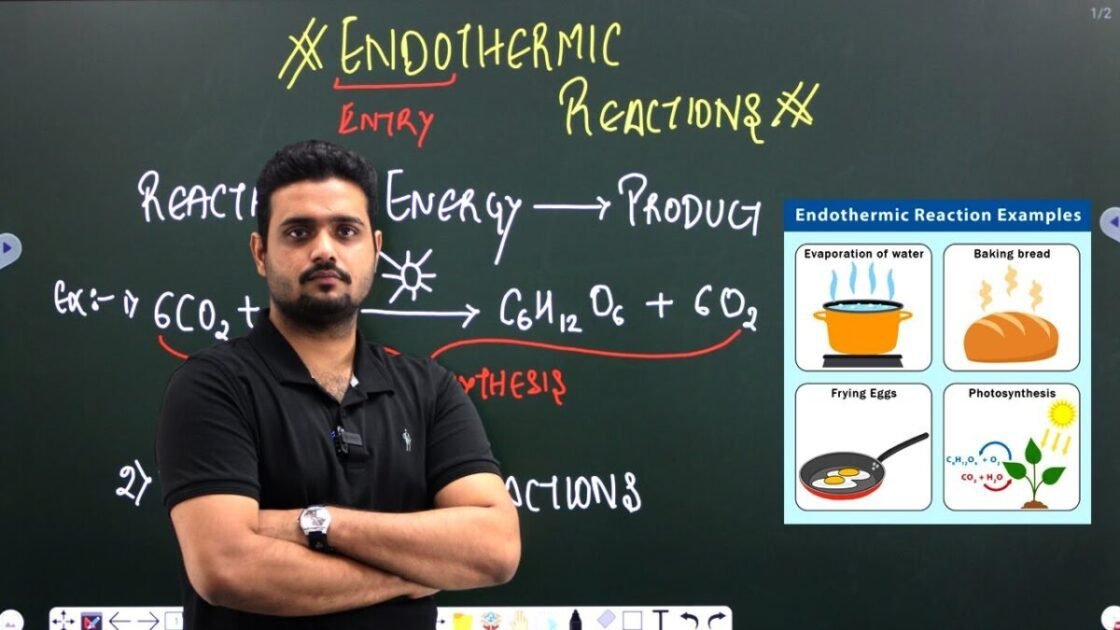Baking bread is an endothermic process, which means it absorbs heat energy to occur. The dough undergoes chemical reactions and transforms into bread as it absorbs heat from the oven.
Is Baking Bread Endothermic Or Exothermic?
When it comes to the process of baking bread, many people wonder whether it is an endothermic or exothermic reaction. In simple terms, an endothermic reaction requires the absorption of energy, specifically heat, to make the reaction occur. On the other hand, an exothermic reaction is a chemical reaction that releases heat. Understanding the nature of these reactions is crucial to grasping the science behind baking bread.
Explanation Of Endothermic Reactions
The absorption of heat energy characterizes an endothermic reaction. In the context of baking bread, the dough requires heat input to transform into a loaf of bread. Bread dough consists of various combined ingredients, but it’s important to note that it will not become bread until heat is added. As the dough absorbs the heat from the oven, chemical reactions occur, causing the dough to rise and transform into a delightful loaf of bread. This absorption of heat makes the process of baking bread an endothermic reaction.
Explanation Of Exothermic Reactions
On the other hand, an exothermic reaction is characterized by the release of heat energy. While various chemical reactions take place during the process of baking bread, the absorption of heat is a crucial factor. Although the bread gets hot in the oven, the heat is not a direct result of chemical reactions but rather a necessary input for those reactions to occur. This means that even though the bread becomes hot inside the oven, the heat energy that the dough has absorbed triggers the chemical reactions leading to the transformation of the dough into bread.
To summarize:
- Baking bread is an endothermic process that requires heat energy absorption for the chemical reactions to occur.
- The dough will not become bread until heat is added, triggering the chemical reactions that transform the dough into a loaf of bread.
- Although the bread gets hot inside the oven, the heat is a necessary input for the reactions rather than a direct result of the chemical reactions.
In conclusion, baking bread is an endothermic reaction, as it requires the absorption of heat energy for the dough to transform into a delicious loaf of bread.
Chemical Reactions In Bread Dough
Chemical reactions in bread dough involve heat absorption, making it an endothermic process. The dough transforms into bread as it absorbs heat in the oven, causing chemical reactions.
Ingredients In Bread Dough
Bread dough consists of a combination of various ingredients that work together to create the final product. These ingredients include:
- Flour: Provides structure and texture to the bread.
- Water helps activate the yeast and bind the ingredients together.
- Yeast: responsible for fermentation and leavening, resulting in the bread’s rise.
- Salt enhances the flavor and controls the fermentation process.
- Sweeteners (sugar, honey, etc.): add sweetness and help activate the yeast.
- Fat (butter, oil, etc.) adds moisture and richness to the bread.
Transformation Of Dough Into Bread Through Heat
The process of turning dough into bread involves the application of heat. When the dough is placed in the oven, several chemical reactions take place, transforming the dough into delicious bread. These reactions include:
- Fermentation: The yeast in the dough consumes the sugars present and produces carbon dioxide gas. This gas gets trapped in the dough, creating air pockets and causing the dough to rise.
- Maillard Reaction: As the bread bakes, the heat causes the reaction. This reaction is responsible for browning and developing the bread’s crust, giving it a desirable flavor and appearance.
- Starch Gelatinization: The heat causes the starch molecules in the dough to absorb water and swell, resulting in a gel-like consistency. This process helps give the bread its structure and texture.
- Protein Denaturation: The high temperatures of the oven cause the proteins in the dough to unfold and solidify, creating a network that helps the bread retain its shape and structure.
Role Of Yeast In Bread Making
Yeast plays a crucial role in the bread-making process. It is responsible for sugar fermentation in the dough, producing carbon dioxide gas. This gas gets trapped in the dough, causing it to rise and give the bread a light and airy texture. Yeast also contributes to the flavor profile of the bread, as it releases compounds during fermentation that add depth and complexity to the final product. Additionally, yeast requires warm water to activate, providing the environment for it to thrive and effectively carry out its fermentation process.

Frequently Asked Questions Of Is Baking Bread Endothermic Or Exothermic | Detailed Guide
Is Baking A Bread Endothermic Or Exothermic?
Baking bread is endothermic because it requires heat energy to transform the dough into bread.
Is The Following Reaction Endothermic Or Exothermic Baking A Cake Endothermic Exothermic?
Baking a cake is an endothermic reaction because heat is required for the ingredients to transform into a cake.
What Type Of Energy Is Baking Bread An Example Of?
Baking bread is an example of an endothermic reaction, where heat energy is absorbed for the bread to transform into a loaf.
What Are 3 Examples Of Endothermic And Exothermic Reactions?
Endothermic reactions include baking bread, cooking an egg, and baking a cake.
Conclusion
Baking bread is an endothermic process that requires heat absorption to transform the dough into a loaf of bread. As the dough is exposed to heat in the oven, chemical reactions occur, causing the bread to rise and develop its characteristic texture and flavor.
Understanding the science behind baking bread can enhance your baking skills and help you always achieve the perfect loaf.

Hi, I’m Esrat, and I’m so glad that you found me here at Happy Food Kitchen! I started Happy Food Kitchen in 2023 to have a creative, right-brained outlet to balance my very left-brained career in genetics.





